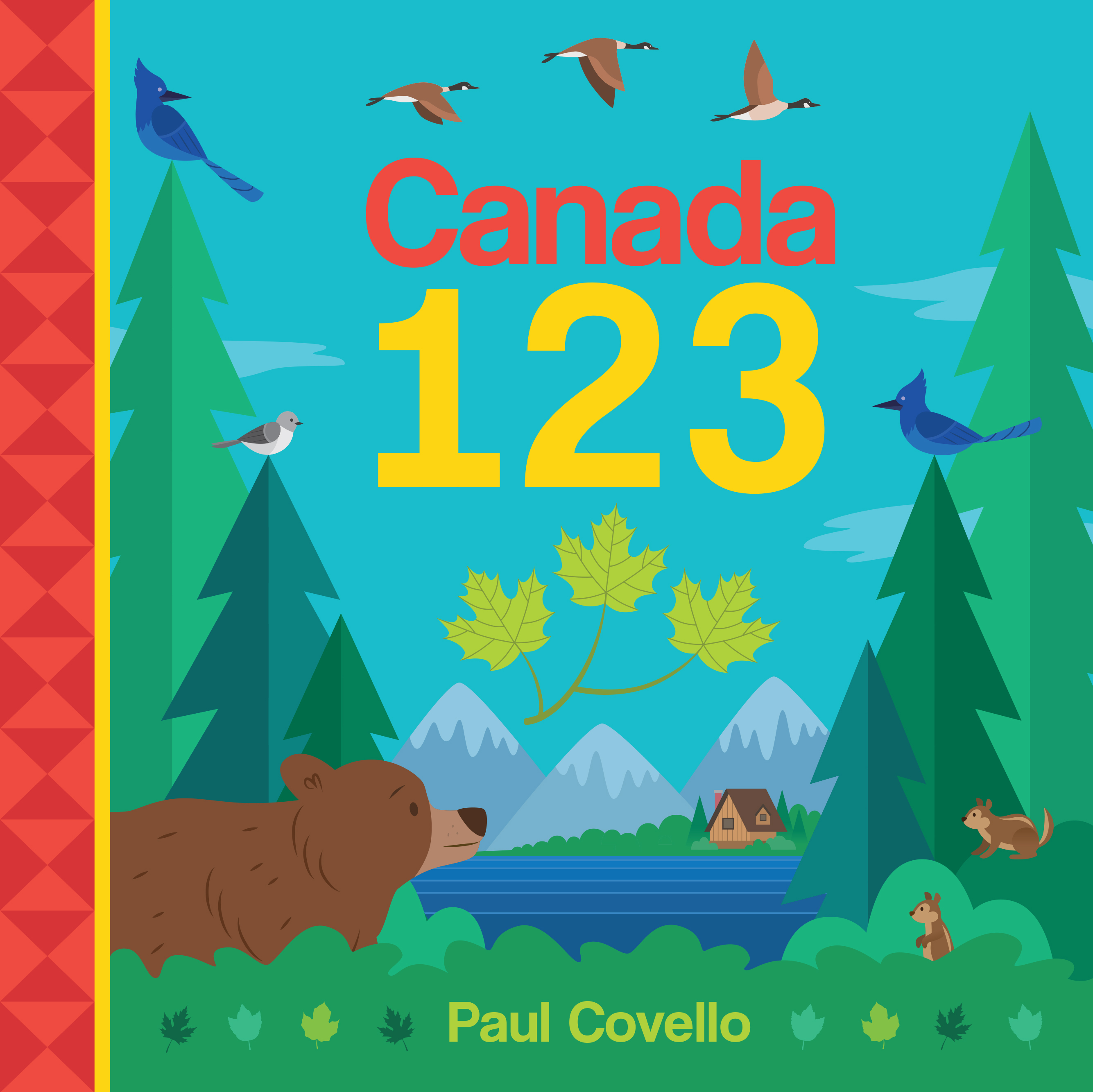| ________________
CM . . .
. Volume XXIV Number 8. . . October 27, 2017
excerpt:
Canada 123 is a companion volume to Covello’s earlier board book, Canada ABC. Like most “introductory” counting books, Covello focuses on the “basic” numbers from 1 to 10, with the addition of 25, 50 and 100. Each number is treated on a pair of facing pages with the brief text indicating both what is to be counted and exactly how many. Because of the presence of “Canada” in the title, naturally most things to be counted have a direct Canadian connection, and so children will be seeking things like six hockey players, seven Canadian geese or nine orca whales. In a couple of instances, the number/object correspondence is not quite as clear as it could be. “2 two official languages” is not something children can count, and so their default position will simply be to count the two children who, via speech balloons, are greeting each other in French and English. The other number which may give younger “counters” some difficulty is “5 five farms”. “Farm” is an inclusive term that can include, for instance, buildings, land, equipment and animals. Urban youngsters who have never encountered a real farm could reasonably conclude that all the buildings, etc. on the “five” page constitute just a single farm. Perhaps the fences Covello used to define property lines are too subtle. Another minor quibble is related to “4 four seasons”. Though each of the seasons is very clearly illustrated, to understand the order in which the seasons naturally occur, the illustrations have to be “read” in a counterclockwise manner. The strengths of Covello’s illustrations significantly outweigh the few irritants noted above. Though Covello’s text tells its young readers what to find, they really need to revisit each spread to see what else can be located that matches the page’s target number. For instance, on the aforementioned “five” page, a reexamination of the illustrations reveals that the following also total five: cows, telephone poles, stalks of wheat, round hay bales, and deciduous trees. At a much more subtle level, there are five objects moved by the wind (three large wind turbines, a weather vane atop a barn and a windmill) plus five farm vehicles (two tractors, two trucks and a modern threshing machine). In some cases, young children may need some adult guidance in finding the “extras” to count. For example, while the 10 sled dogs are front and center, there are also 10 other animals (three birds, two deer, two rabbits in their winter camouflage, a squirrel, a fox and a mouse to be found on the number’s pages) as well as 10 trees (six deciduous and four evergreen) and 10 branches on each of two leafless bushes. In Canada 123 Covello again uses brightly coloured cartoon like illustrations that are most appropriate for the board book’s intended audience, and his illustrations are gender and racially inclusive. Covello has illustrated the book’s front and back endpapers differently. The former presents “0 zero degrees”, this number being a most unusual addition to an introductory counting book. The latter presents a map of Canada with the locations of the provinces and territories clearly delineated. As well, each provincial and territorial flag, plus the Canadian flag, is portrayed. And while I have complete confidence that Covello really did draw 50 train cars and 100 snowflakes, I’m sure that many children will not take him at his word and will painstakingly count each and every railway car and snowflake. Overall, Canada 123 is an excellent home or gift purchase and belongs in all collections serving the young. Highly Recommended. Dave Jenkinson, CM’s editor, lives in Winnipeg, MB.
To comment
on this title or this review, send mail to cm@umanitoba.ca.
This Creative Commons license allows you to download the review and share it with others as long
as you credit the CM Association. You cannot change the review in any way or use it commercially. Commercial use is available through a contract with the CM Association. This Creative Commons license allows publishers whose works are being reviewed to download and share said CM reviews provided you credit the CM Association.
Next Review | Table of Contents For This Issue - October 27, 2017 |
